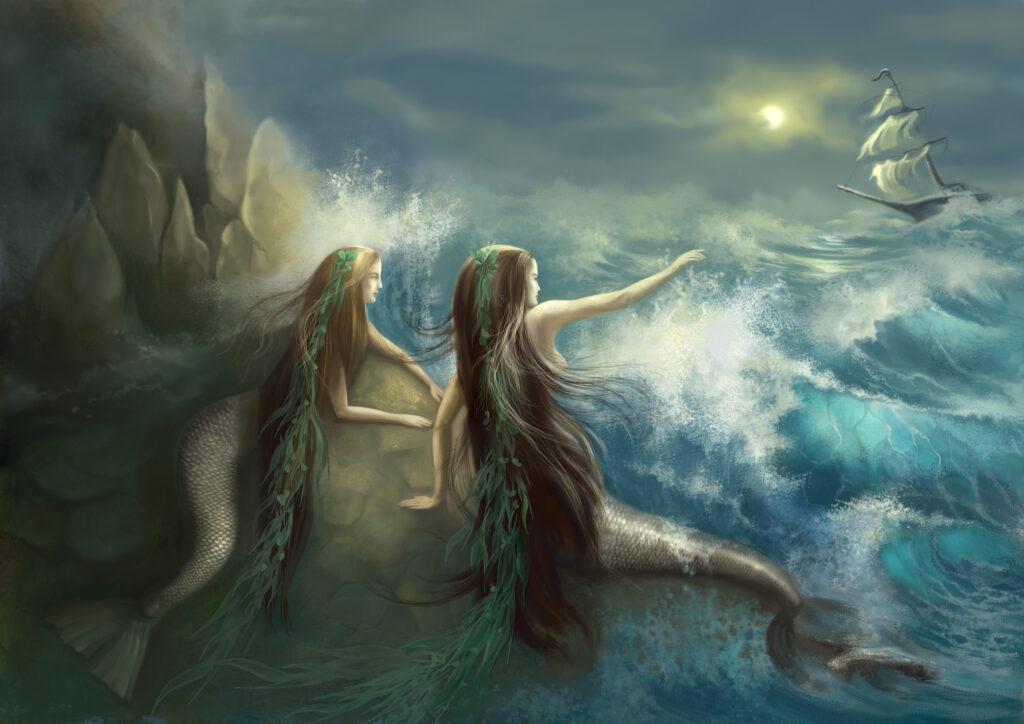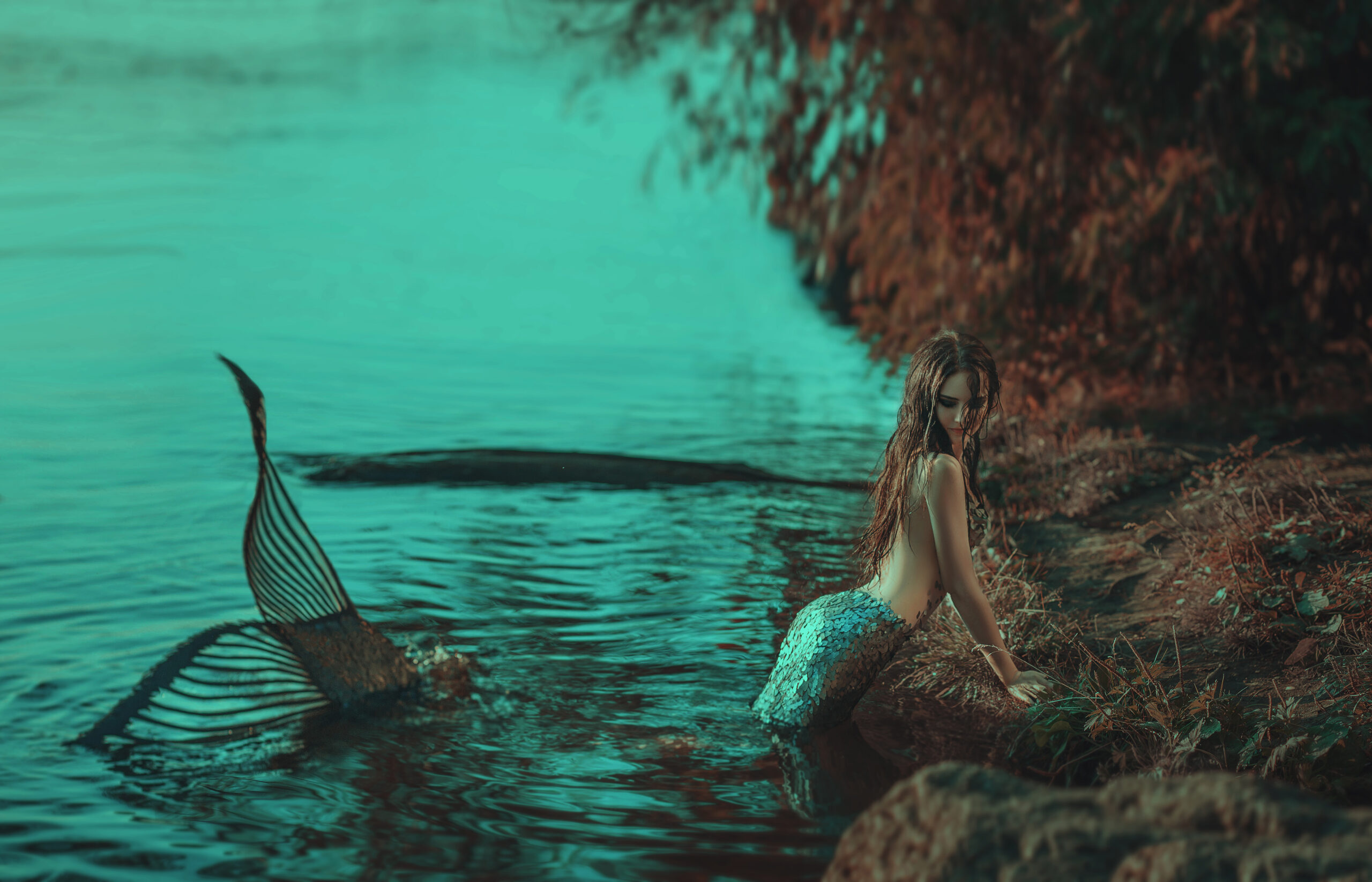Mermaids have captivated us for centuries, inspiring legends and folk tales that stretch around the world.
But do these stories have any basis in reality? Could mermaids exist in some form or another?
From ancient folklore to modern pop culture, let’s explore the history of mermaids and discover if they are more than just myths.
Join us as we dive deep into this mysterious topic – from examining their place in different cultures to exploring scientific possibilities – you’ll be sure to learn something new about these legendary creatures.
Mermaids Around the World
Mermaids have been a part of folklore and mythology for centuries, but are they real?
Though science has yet to prove their existence, the stories of mermaids have long enthralled people worldwide.
From European folklore to Asian mythology and African legends, here’s what we know about these aquatic humanoids.
European Folklore

Mermaids appear in many forms throughout Europe—from water nymphs who lured sailors with their enchanting singing to sirens from Greek mythology who can transform into half-fish creatures.
Even Hans Christian Andersen wrote about them in his fairytales.
The most famous example is Disney’s version of “The Little Mermaid” which has become an iconic figure all over the world.
Asian Mythology
In Asia, stories about mermaids date back thousands of years ago when ancient Chinese cultures believed that dragons were able to take on a human form when they ventured onto land.
This idea was later incorporated into Japanese culture where some even believe that mermaids still exist today.
Reports of mermaids have been surfacing in Africa along the Indian and Atlantic coasts for centuries.
Numerous stories tell of mysterious creatures swimming alongside boats at night or during storms near beaches throughout West Africa, as well as other parts of the continent.
Furthermore, some individuals claim to have discovered human-like bodies washed up on shore with long hair covering their lower bodies.
It appears that tales of these aquatic humanoids will continue to captivate imaginations for years to come.
Whether it be Syrian goddess Atargatis transforming herself into a fish or theories surrounding an aquatic ape ancestor helping to evolve humans, one thing remains true: people everywhere love talking about mythical sea maidens.
Keep watch for any indications of these mythical sea maidens when you’re in the vicinity of bodies of water.
Mermaids have been a part of folklore for ages, and their appearances in different cultures are an intriguing matter to examine.
Continuing our exploration of mermaids, let’s examine their modern representation in popular culture.
Mermaids in Pop Culture
Movies and TV Shows have always been a great way to bring mythical creatures like mermaids into the mainstream.
From Disney’s classic The Little Mermaid to shows like Siren, we’ve seen many iterations of these aquatic humanoids.
What makes mermaids so enduringly popular in our culture? One possible explanation is the ancient lore and legends surrounding them.
For centuries, stories of drowning sailors being saved by beautiful sea maidens with long hair and a lower body resembling fish have been told around campfires all over the world.
Hans Christian Andersen even wrote his famous fairytale “The Little Mermaid” based on European folklore from the 18th century.
Music and books also feature heavily when it comes to mermaids in popular culture.
Whether they’re depicted as sirens luring sailors off course or innocent creatures living peacefully beneath the waves, there are countless songs, novels, poems, comic books, and other works of art dedicated to this mythical creature.
Even National Oceanic & Atmospheric Administration (NOAA) has released reports stating that “there may be some truth behind these tales [of mermaid sightings]” which further adds fuel to speculation regarding their existence.
Lastly, we come to artwork and toys featuring mermaids which range from cute collectibles such as dolls wearing seashell bras to realistic paintings depicting their beauty underwater – there is something for everyone.
It is theorized that humans may have descended from an ape-like creature with a tail instead of legs, much like the iconic Ariel in The Little Mermaid.
Of course, no discussion about modern representations would be complete without mentioning Weeki Wachee Springs State Park in Florida where visitors can watch live performances by professional ‘mermaids’ swimming gracefully through the water every day.
For centuries, mermaids have been a source of intrigue and remain an object of fascination today.
Moving on from this topic, let us explore what is being done today to uncover evidence of mermaids’ existence.
Exploring the Possibility of Mermaids Today
Cryptozoology Research
Cryptozoologists have been researching the possibility of mermaids for centuries.
Cryptozoologists have probed different legends and narratives, as well as sailor stories of having seen mermaids in their natural habitats.
Despite the research and reports, no proof of mermaids’ existence has yet been found.
Cryptozoologists are continuing their quest to verify the existence of these creatures by analyzing any physical evidence they can find, such as bones or remains on beaches and near shorelines.
Sightings and Reports
There are numerous reported sightings of mermaids throughout history, some dating back hundreds of years.
These stories range from sailors seeing a beautiful woman-like creature swimming in the ocean to fishermen finding mysterious fish-like creatures with human features washed up on shorelines after storms.
In more recent times, people have taken photographs and videos that they claim show mermaids in action – though most are later debunked as hoaxes or mistakes due to poor lighting conditions at night or distance issues during daytime filming sessions.
Given the considerable evidence and suppositions, further exploration into mermaids is certainly a captivating topic.
Examining the captivating information concerning mermaids, let’s dive into some intriguing trivia about these alluring creatures.
Fun Facts About Mermaids
Even the most knowledgeable fans of mermaids may not be aware of all the fascinating facts surrounding these mythical creatures.
From interesting trivia to strange superstitions, here is a look at some of the more unique aspects of these mythical creatures.
A popular modern example of a mermaid is Ariel from Disney’s The Little Mermaid.
Surprisingly, Ariel was initially intended to be an otter rather than a mermaid.
Another interesting tidbit is that many cultures believed in special stones called “mermaid’s tears” which were thought to bring luck and protection against storms at sea.
Unusual Beliefs
Some cultures believe that if you make eye contact with a mermaid your soul will be taken away or you will drown.
Others say they can grant wishes but only if they’re given something valuable like jewelry or coins first.
Finally, according to folklore from around the world, mermaids can also lure sailors off course with their singing voices and enchant them into staying forever beneath the waves.
Strange Superstitions
Many seafarers believed in certain superstitions regarding merfolk such as never leaving food on your plate when eating near water because it could attract them or wearing copper bracelets while swimming so they wouldn’t pull you under.
Other myths claim they have magical powers over fish populations and can control how many catches people get each day depending on their mood.
Finally, there are stories about how if someone spots one three times then bad luck will follow them for seven years.
The murky depths of the oceans and seas may conceal untold secrets, yet the captivating legend of “mermaids” continues to fascinate us.
FAQs about Mermaid
What’s special about a mermaid?
For centuries, the idea of mermaids has held a captivating power over people’s imaginations.
They are seen as mysterious, mythical creatures with an alluring beauty and a connection to the sea.
Their combination of human and aquatic features makes them distinct from other mythical creatures, giving them an enchanting beauty.
Mermaids are revered for their symbolism of freedom, independence, and strength – attributes that make them powerful figures in many cultures.
Their captivating allure has made them beloved by many.
What is the myth of mermaids?
Mermaids are mythical creatures with the upper body of a human and the tail of a fish.
They have been part of folklore for centuries, often portrayed as beautiful yet dangerous sirens that lure sailors to their death.
Mermaids also feature in many other cultures around the world, from Polynesian mythology to Irish legend.
In some stories they are benevolent guardians who help lost sailors find their way home; in others, they bring bad luck or cause storms at sea.
Whatever form mermaids take, they remain an enduring symbol of mystery and enchantment across cultures and generations.
What are three facts about mermaids?
1. Mermaids have been part of folklore for centuries, appearing in various cultures around the world. Mermaids are typically portrayed as having a human torso connected to the tail of an aquatic creature.
2. Many legends suggest that mermaids can use their singing voices to charm humans into following them underwater, while others describe them as dangerous creatures who lure sailors away from safety by mimicking human cries for help.
3. Despite no physical evidence existing to support their existence, many people still believe in mermaids today and sightings continue to be reported worldwide each year.
What makes a mermaid a mermaid?
Mermaids are typically portrayed with long, flowing hair, large eyes, and fins instead of arms or legs.
Mermaids have been part of folklore for centuries, often associated with sirens who lured sailors to their deaths in ancient Greek mythology.
In modern culture, they are seen as beautiful creatures that can grant wishes or bring luck to those who find them.
Mermaids have become a popular symbol of femininity, beauty, and mystery.
Conclusion
Despite the lack of evidence, mermaids remain an enduring mystery and a captivating subject in both folklore and popular culture.
Though there is no evidence of mermaids in the present, their mythical allure and captivating nature have endured through time.
No matter one’s opinion of their actuality, the charm of these mysterious aquatic beings is undeniable.
From ancient stories to modern interpretations, we can’t help but be captivated by this magical creature known as the mermaid.
Come join us in exploring the mysteries of Bigfoot and other fringe creatures, such as mermaids.
Help uncover new evidence that will shed light on these elusive beings!

